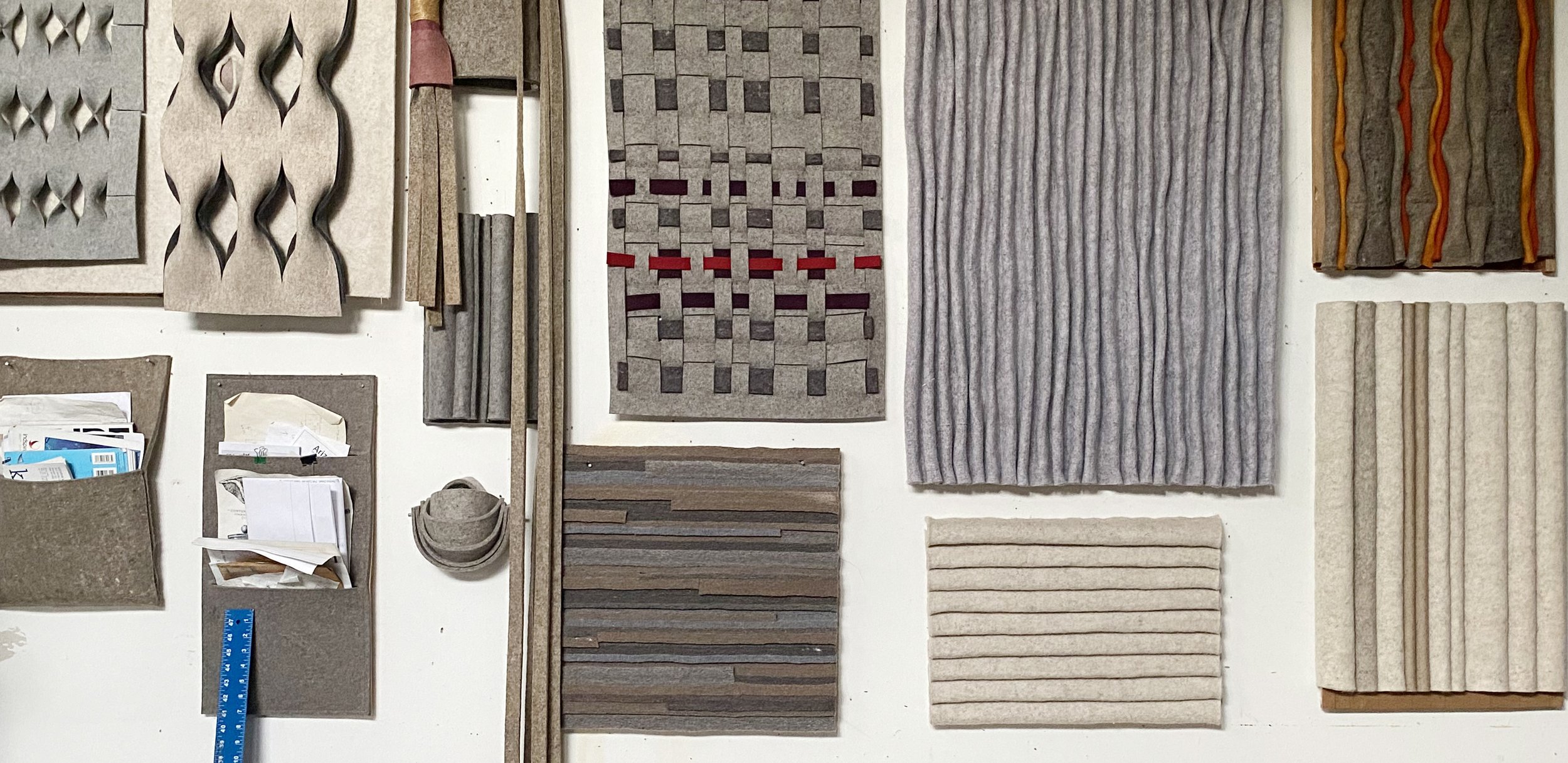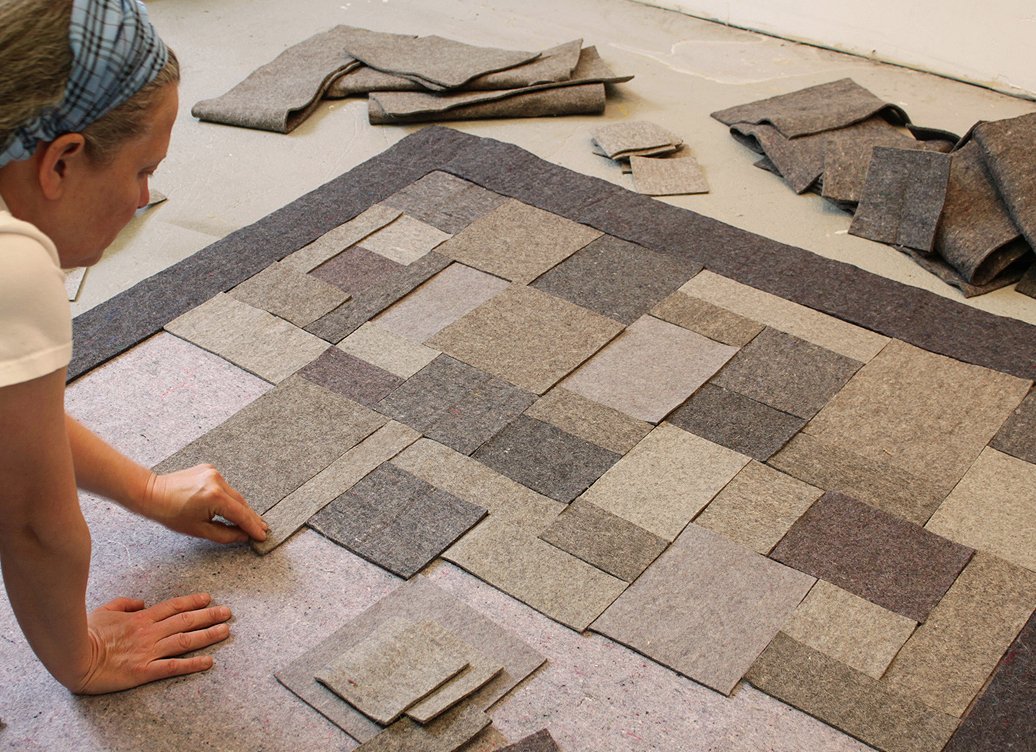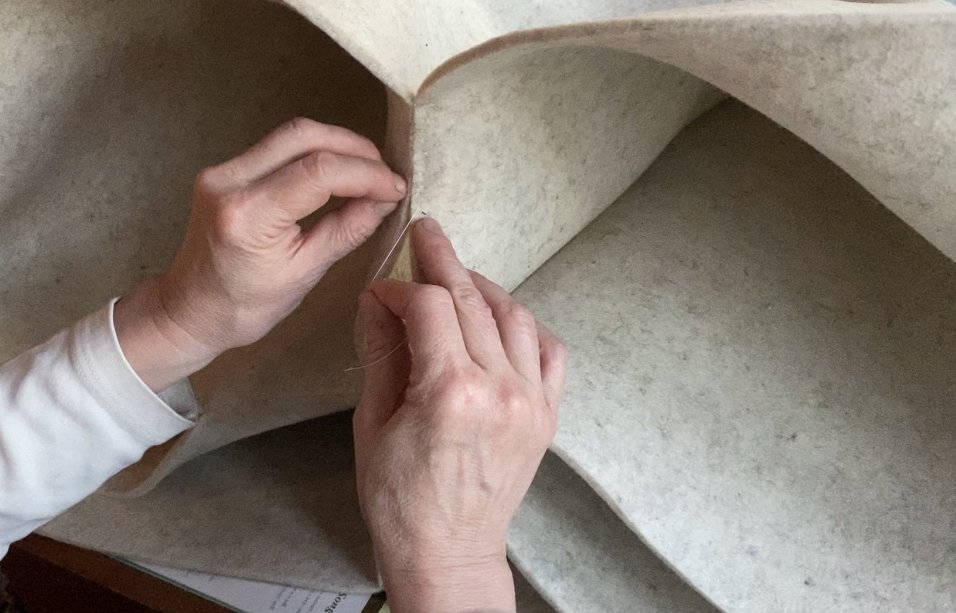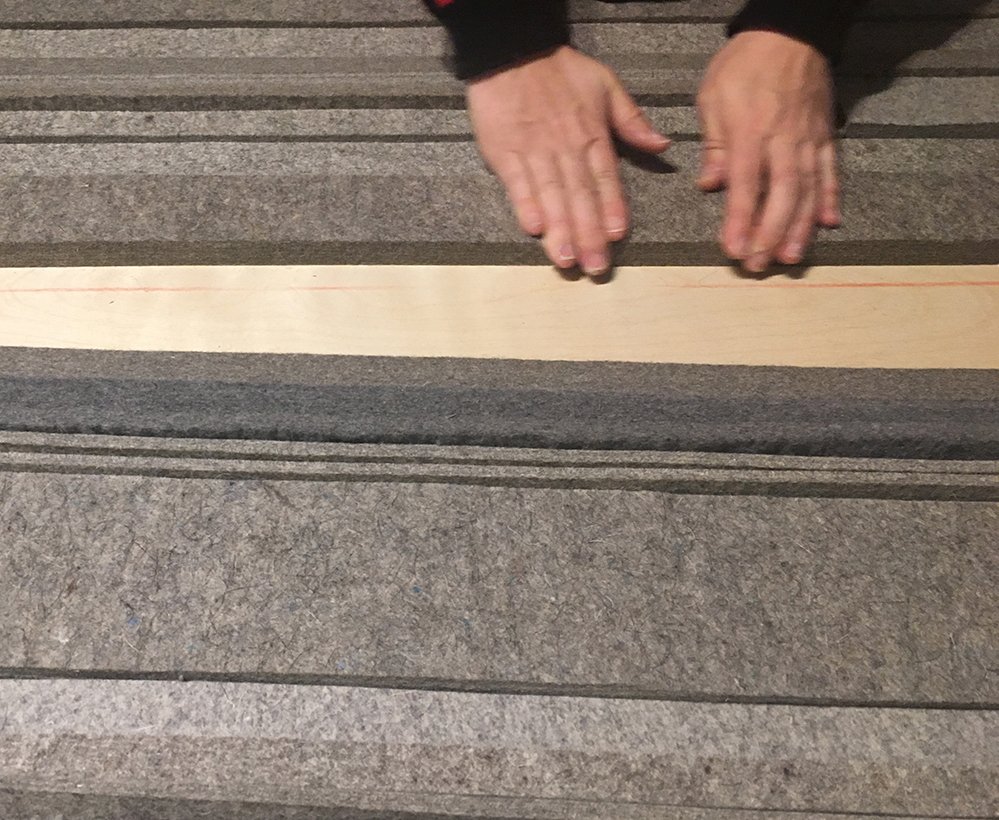
About FELT
Kathryn Walter founded FELT in 2000, and has since directed the studio in creating interior commissions, gallery exhibitions and product lines that explore the rich material and culture of manufactured felt. FELT projects have been exhibited and installed in sites across North America, often through collaboration with architects, designers and clients, and in response to a range of ideas, sites and budgets. As artist, designer, director and maker, Walter has produced art objects and large-scale installations alike. In 2019, she was a recipient of the Allied Arts Medal awarded by the Royal Architecture Institute of Canada (RAIC) for creative collaboration.
-

Interiors
This portfolio showcases FELT wall designs that have developed over twenty years and adapted to different sites. FELT projects take shape through discussions with design teams at the early stages of interior planning.
-

Exhibitions
This portfolio of FELT works include projects produced by Kathryn Walter in response to curatorial initiatives and pieces produced for thematic exhibitions in art and design contexts.
-

Products
Shop from FELT collections that include a series of Limited Editions made from remnants, offcuts and roll ends. Also, see a portfolio of Editions that showcase custom products commissioned by clients.
A FELT Story:
The history behind the studio
In the late nineteenth century Ernst Walter, a German immigrant, partnered with a felt manufacturer from his homeland to import felt to Canada in the heyday of industrial growth in North America. He settled in Montreal and built his namesake company in the wholesale trade of felt and felt products, eventually working as an agent for local manufacturers.
Business flourished through the following generation as felt manufacturing grew into its own alongside the automotive industry. Felt was a bumper crop through both world wars with 90% of its production going to the making of armaments. Where there was steel there was often felt. Wicking oil and dampening vibration were among many mechanical applications. Padding, filters, gaskets and seals continue to be mainstays of industrial felt production. Post-war development of plastic-based materials grew to take over many of felt’s markets, and globalization forced much North American manufacturing offshore. By the turn of the millennium the family business had pivoted in new directions though felt remains unparalleled in numerous specialty markets.
Kathryn Walter, one of Ernst’s great granddaughters, found inspiration in the same material her ancestor found so rich in quality and possibility.





Walter’s family’s history in the felt industry inspired research that led to an exhibition she curated about felt for the Textile Museum of Canada (1999-2000). The revelation of felt’s vast history and rich potential led to the founding of FELT to explore this material in the fields of art and design.
With a background in visual art, Walter brings her training in sculpture and installation to her practice. She finds balance directing the studio through commercial and experimental projects that explore both the range of material properties and the rich material culture of felt.
See more about Kathryn Walter
The FELT Logo
The FELT logo is designed using black rectangular bars. The letters are not of a font, rather they are built from a series of blocks intending to give the impression of modern felt, manufactured by machine, standardized in rolls and sheets. The logo also reflects Walter’s minimalist aesthetic, and her tendency to work with basic shapes and patterns, finding creativity in the limits of form.

